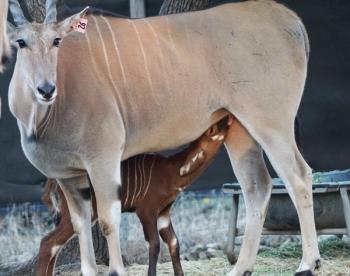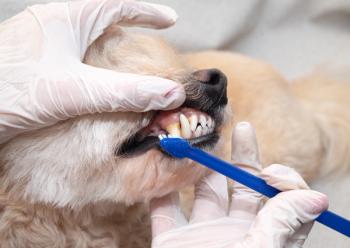
Idiopathic cystitis: Recurrence rates can impact almost half of patients
Optimal medical care should include measuring BUN, serum creatinine and serum electrolytes daily.
Q. Please review inappropriate urination/cystitis in cats.
A. Dr. Jeanne Barsanti at the 2005 American College of Veterinary Internal Medicine Forum in Baltimore gave a lecture on feline idiopathic cystitis/urethritis. Some relevant points in this lecture are provided in this discussion.
A common presenting complaint of cat owners is inappropriate urination. Medical causes of inappropriate urination include polyuria and dysuria. In addition, incontinence could be interpreted as inappropriate urination by cat owners, too. Lower urinary tract diseases in cats are as varied as those in any other species. In young-adult cats, the most common causes of dysuria and hematuria without obstruction are idiopathic (approximately 70 percent) and urolithiasis (approximately 25 percent).
Causes
Infectious agents have been investigated without identifying a culprit. Thus, there is no definitive evidence that idiopathic cystitis is a contagious disease. There is no evidence of a relationship with FeLV or FIV. Struvite crystalluria has been proposed as a causative factor. However, struvite crystals are commonly noted in urine of normal cats. Use of acidifying diets has not prevented recurrence of clinical signs in some cats affected with cystitis.
Bladder diverticula associated with an urachal remnant have been identified in cats with lower urinary tract signs. However, urachal remnants are common in cats. One study of 735 cats used for anatomy dissections indicated that 22 percent of males and 26.5 percent of females had identifiable urachal remnants. Comparing this to the incidence of lower urinary tract signs (0.85 percent) suggests that most cats with urachal remnants do not have signs of lower urinary tract disease. Radiographic evidence of urachal remnants has been shown to resolve spontaneously with resolution of clinical signs. Appearance of urachal remnants in cats with urethral obstruction is now thought to be a consequence of bladder-wall injury, rather than a possible causative factor.
The effect of early age neutering (younger than 10-14 weeks old) on urethral characteristics and predisposition to obstruction has been evaluated. Several studies have found no effect of early age neutering on urethral diameter in male cats. No association has been found between age of neutering and occurrence of idiopathic cystitis or urethral obstruction.
Most recently, idiopathic cystitis has been compared to interstitial cystitis in women. Interstitial cystitis is a painful, progressive disease of unknown cause, characterized by dysuria. Histologically, the lesion is characterized by inflammation and edema. Because of the similarity of clinical signs, urine biochemical findings and histologic appearance, it has been theorized that idiopathic feline cystitis might be similar to interstitial cystitis. Qualitative and quantitative changes in the glycosaminoglycan (GAG) layer of the bladder have been found in affected women and cats. This is associated with an increased permeability, allowing substances in urine to pass through the urothelium to the bladder wall, where they may cause inflammation. It is not known what causes the alteration in the GAG layer. However, one important difference in the two conditions is that the frequency of recurrence of acute signs in cats declines as the cat ages.
Cats with idiopathic cystitis tend to be fed significantly more dry food than cats without this problem. Although this does not show that dry food causes idiopathic cystitis, it implies a relationship. Stress has been considered as a possible causative factor. Cats with idiopathic cystitis more likely live in multiple-cat households or with another cat with which there is conflict.
Urinalysis
It is essential that a complete urinalysis including microscopic examination of the urine sediment be performed on all cats with lower urinary tract problems. Whenever possible, urine should be collected prior to treatment. It is also important to note how the urine sample was obtained because the technique may affect interpretation of the results.
When urine is collected by cystocentesis or catheterization, a small portion (approximately 1 ml) should be placed in a sealed, sterile container. When the urinalysis suggests infection through the presence of pyuria or bacteriuria and in older cats with hematuria, this saved sample should be cultured for aerobic bacteria. If the sample was collected by catheterization, the culture should be quantitative as well as qualitative. Saved urine samples should be stored under refrigeration and cultured within six hours or placed in urine transport tubes. Hematuria is the principal finding on urinalysis in cats with idiopathic cystitis. Pyuria is minimal to mild.
Ultrasonography
Ultrasonography is a useful tool for evaluating the urinary bladder of cats with dysuria/hematuria as long as the bladder contains urine. It is difficult to image the empty bladder, a problem in markedly dysuric cats without obstruction. The urethra, because of its passage through the pelvis, is not able to be imaged by transabdominal ultrasonography. The advantage of ultrasound over survey abdominal radiography is that both radiolucent and radiodense calculi, of relatively small size (including "sand ____ same thing as observed echogenic particles") can be detected. In fact, ultrasound is so sensitive that occasionally calculi diagnosed by ultrasound cannot be found at surgery. Bladder-wall thickening is the primary finding in idiopathic cystitis.
Management of cystitis
Most cats improve, regardless of therapy, within five days. If the signs do not abate within seven days, a diagnostic plan to rule out other causes of hematuria and dysuria should be instituted. Antibiotic therapy is not indicated in cats with idiopathic cystitis as it has been shown to be no more effective than placebo. Subcutaneous fluids (100 ml lactated Ringers), a smooth muscle relaxant (propantheline bromide, 7.5 mg PO) and anti-inflammatory doses of prednisolone (1 mg/kg/day PO) as compared to no therapy have indicated no difference in response. Amitriptyline at 5 mg per cat daily PO is also no more effective than a placebo in resolving hematuria, although pollakiuria responded more quickly. Recurrence rate within six months is higher in the cats that are treated with amitriptyline. Amitriptyline at 10 mg per cat for seven days is no more effective than a placebo and has a high incidence of adverse effects. Drugs to relieve pain may be useful. Reported adverse effects in cats include sedation, urinary tract infection, neutropenia, basophilia, hyperbilirubinemia and increased serum ALT.
Some cats that have had an episode of urethral obstruction will be presented for hematuria and dysuria but will have a small bladder on physical examination. In these cats, the possibility of UTI is greater because of previous urinary tract manipulation. Cats that have had a perineal urethrostomy also have a greater risk of UTI. A urinalysis and urine culture should be performed on all such cats before concluding that the recurrence is idiopathic.
If survey radiography and ultrasonography are normal, or only show a thickened bladder wall, but the cat continues to have dysuria and hematuria beyond five to seven days, symptomatic therapy is recommended, although proof of efficacy is lacking. Change of diet to one that increases water intake (canned food) is often the approach recommended.
Management of urethral obstruction
The cornerstones of therapy remain relief of obstruction and parenteral fluid support. Alkalinizing balanced electrolyte solutions (such as lactated Ringers) are appropriate for most cats. Management varies with the severity of clinical signs.
After the obstruction is relieved, a sterile, flexible 3.5F rubber feeding tube type catheter should be inserted into the bladder, collecting a urine sample for urinalysis if one has not already been obtained by cystocentesis. Flexible catheters are preferred because of their longer length. Ten cm polypropylene catheters often do not reach the bladder lumen. Flexible rubber catheters also produce less bladder and urethral trauma. The catheter should be inserted just to the bladder by determining the point at which urine is first obtained by aspiration. If a large quantity of crystalline material or blood is evident in the urine, the bladder is repeatedly flushed with 10-20 ml aliquots of a sterile isotonic solution until the returning flushing solution is relatively clear.
Whether the catheter is removed or sutured in place should be based on the characteristics of each individual case. Leaving the catheter in place prevents immediate re-obstruction and facilitates monitoring of urine output, but also leads to bacterial urinary tract infection and urethral irritation. If the urethral catheter is left in place, a closed drainage system should be established. An Elizabethan collar is usually necessary to prevent the cat from removing the urethral catheter or disconnecting the drainage system.
At present, the best recommendation is to leave the catheter in place only if one of the following conditions is present:
- the obstruction was relieved with difficulty;
- the urine stream is weak and small after relief of obstruction or a large amount of crystalline debris is evident with bladder flushing;
- the cat is uremic;
- detrusor dysfunction is present secondary to over distention.
To avoid catheter-induced complications, the catheter should be left in place as short a time as possible.
Unless clinical signs of bacterial infection develop, antimicrobial therapy is not used prophylactically while a urinary catheter is in place.
UTI can occur in spite of prophylactic antibiotics. Infection in cats receiving antibiotics will be with more highly antibiotic resistant organisms. Opportunistic fungal infections of the urine and bladder have also been reported in association with frequent urethral obstruction and antibiotic administration. Instead of prophylactic antibiotics, a urine sample is collected for urinalysis and culture when the catheter is removed. If bacterial infection is present, antibiotic therapy is instituted for 10 days. A urine culture should be performed again three to five days after the antibiotic regimen is completed to ensure that the infection was eliminated. In evaluating culture results when the urinary catheter is removed, any bacteria isolated should be considered significant as long as the sample was collected from the catheter or by cystocentesis. Aseptic technique should be used.
Optimal medical care should include measurement of BUN, serum creatinine, and serum electrolytes daily until these normalize. Fluid therapy should be continued until the azotemia is resolved. Subcutaneous fluids can be substituted for intravenous fluids once the uremic signs abate and serum potassium is normal (usually within four to 24 hours).
Cats with partial or total anorexia and a post-obstructive diuresis may become hypokalemic a few days after obstruction is relieved. Recurrent or worsening weakness and lethargy may be the only clinical signs.
If hypokalemia is suspected, it should be confirmed by measurement of serum potassium concentration. If present, potassium supplementation can be given orally if the cat is not vomiting or 16 mEq KCL can be added to each liter of balanced electrolyte solution. If hypokalemia is severe (<3.0 mEq/L), additional potassium supplementation may be needed.
A potential consequence of urethral obstruction is damage to the bladder detrusor muscle by prolonged over distention. Loss of the tight junctions between muscle fibers prevents spread of motor nerve impulses that permit bladder contraction. Thus, even after relief of obstruction, the cat cannot voluntarily empty its bladder, but the bladder can be expressed manually with a good urine stream, indicating that no outflow obstruction exists. Treatment is directed toward keeping the bladder empty so that the tight junctions can reform. This can be done by frequent manual expression or by use of an indwelling urinary catheter. Time required for return of bladder function varies with degree of injury.
Another reason for inability to urinate after relief of obstruction is outflow resistance. Physical examination shows that even with adequate manual compression, the urine stream is weak. Causes of such outflow resistance include recurrence of intraluminal obstruction, extraluminal obstruction or urethral spasm. Physical obstructions should be ruled out by urethrography. If urethral spasm is present, drug therapy may be of benefit, but has not been well evaluated in cats. A drug to consider would be phenoxybenzamine to block urethral alpha-adrenergic receptors. Side effects of phenoxybenzamine, such as hypotension, are related to alpha-adrenergic blockade. The drug should not be used in cats with cardiovascular disease.
Prevention
Recurrence rates for idiopathic cystitis have been 40-65 percent, depending perhaps on how closely the owner observes the cat. Only three prospective studies have been done to evaluate the efficacy of treatment regimens to prevent recurrence of idiopathic cystitis. One study compared the efficacy of a dry versus a wet acidifying diet (diets identical except for water content). Incidence of recurrence was lower on the wet diet (11 percent versus 39 percent), indicating the importance of increasing water intake. Methods to increase water intake include feeding canned food, dry food mixed with water, providing water the cat likes (such as fresh water), and providing bouillon, soups or broths from cooking. The second study evaluated oral glucosamine versus a placebo. Recurrence rates were the same in both groups, although there were four cats of 20 in the glucosamine group that relapsed whenever the drug was discontinued and improved again when it was reinstituted, suggesting some cats may be responsive. Interestingly, owners of cats in this study changed the cats' diets. Prior to the study, 95 percent of the cats were fed at least 50 percent dry food; within one month of starting the six-month course of therapy, more than 80 percent were fed solely wet food, and their urine specific gravity dropped accordingly. Cats in both groups improved during the six-month study, providing further support that the most effective treatment option may be to change from dry to wet food. The third study compared the use of feline facial pheromone in the environment versus placebo for two months. No significant difference was found, although the study involved only nine cats.
Dr. Hoskins is owner of DocuTech Services. He is a diplomate of the American College of Veterinary Internal Medicine with specialities in small animal pediatrics. He can be reached at (225) 955-3252, fax: (214) 242-2200, or e-mail:
Newsletter
From exam room tips to practice management insights, get trusted veterinary news delivered straight to your inbox—subscribe to dvm360.






